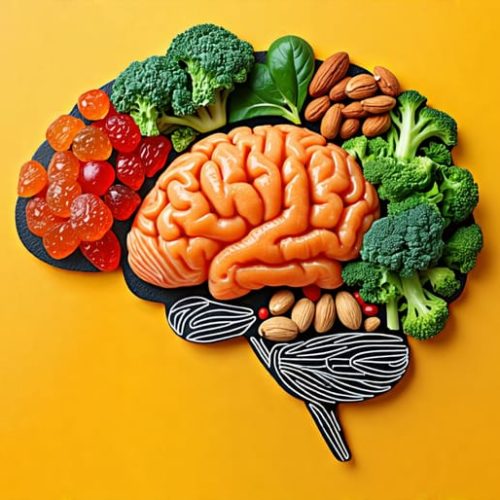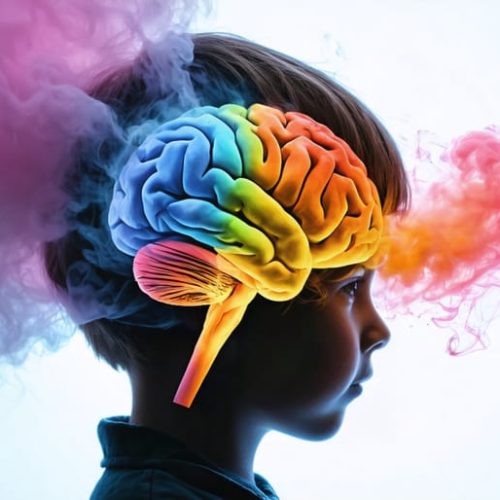As parents seek to understand potential risks to child development, the growing presence of THC-infused products like delta-9 gummies in many households raises important questions about safety and neurodevelopment. This comprehensive guide examines what parents need to know about THC gummies, their potential impact on developing brains, and crucial preventive measures to protect children’s well-being.
Understanding THC Gummies
Composition and Forms
THC gummies are edible candies infused with tetrahydrocannabinol (THC), the psychoactive compound found in cannabis. These gummies are typically produced by extracting THC from cannabis plants, which is then infused into a gummy candy base. This process allows the THC to be evenly distributed throughout the candies, providing consistent dosing. Available in various shapes, flavors, and concentrations, THC gummies have become popular for their discreet and convenient consumption. It’s essential for parents, educators, and healthcare professionals to understand these forms, as even small amounts can impact a child’s neurodevelopment, raising significant health concerns.

Legality and Access
The legality of THC gummies varies widely, with some regions like certain U.S. states and countries permitting their sale and possession under specific regulations, while others maintain strict prohibitions. Despite these legal frameworks, children might inadvertently gain access to these products due to their resemblance to regular candy. This poses a risk, particularly in environments where THC gummies are legally and readily available but not securely stored. Parents, educators, and healthcare professionals must be vigilant in securing these products and educate children about the potential dangers. It’s crucial to foster awareness and implement safety measures to prevent accidental ingestion.
Potential Impact on Child Neurodevelopment

The Developing Brain
Understanding the development of a child’s brain highlights why exposure to THC, the main psychoactive compound in marijuana, warrants special concern. Early childhood and adolescence are marked by rapid brain development, involving a complex process of cell growth, connectivity, and the pruning of neural connections. This period is crucial for establishing key cognitive, emotional, and social skills.
During these formative years, the brain undergoes significant changes, particularly in the prefrontal cortex, which is responsible for critical thinking, decision-making, and impulse control. These areas of the brain continue to develop well into early adulthood, making young brains especially vulnerable to external influences like THC.
When THC enters the body, it interacts with the endocannabinoid system, which plays a vital role in brain development and neurotransmitter regulation. Disruption of this system during crucial developmental phases can potentially alter the natural trajectory of the brain’s growth and maturation. This alteration may lead to issues with attention, memory, learning, and even mood management, as these cognitive processes are highly dependent on a well-developed neural network.
While research is ongoing, early studies suggest that exposure to THC during these sensitive periods could increase the potential for developmental disorders. For parents, educators, and healthcare professionals, understanding these risks is essential for safeguarding children’s health and ensuring their developmental potential is fully realized. Recognizing the critical nature of these brain development stages helps in advocating for careful monitoring and preventive measures to protect young individuals from potential harm.
Research Findings
Recent research has raised growing concerns about the impact of THC gummies on children’s neurodevelopment. THC, or tetrahydrocannabinol, is the primary psychoactive compound found in cannabis products, and its effects on developing brains can be profound and long-lasting. Studies indicate that early exposure to THC may interfere with critical stages of brain development, potentially affecting cognitive functions such as memory, attention, and learning. These cognitive disruptions can lead to challenges in academic performance and social interactions, highlighting the importance of safeguarding child mental health.
Behavioral implications are also significant, with research suggesting that children exposed to THC are at a higher risk of developing mood disorders, anxiety, and hyperactivity. The developing brain is particularly sensitive to substances that alter neurotransmitter functioning, possibly leading to enduring changes in behavior and emotional responses. The dosage and frequency of exposure play crucial roles, as higher concentrations of THC are more likely to have adverse effects, emphasizing the need for strict regulation and awareness among parents and caregivers.
These findings underscore the vital need for a multidisciplinary approach in addressing the potential risks associated with THC exposure during childhood. Customized interventions and preventive strategies should be tailored to mitigate these risks, with healthcare professionals, educators, and families working collaboratively. Understanding the potential long-term implications is essential for making informed decisions and protecting children’s developmental trajectories. As research continues to evolve, further exploration and awareness are critical in promoting safe practices and supportive environments for children’s growth.
Health Implications and Risks
Short-term Effects
When children unintentionally ingest THC gummies, there can be noticeable short-term effects. These effects often vary according to the child’s age, weight, and sensitivity to THC. Some immediate reactions include altered senses, such as heightened visual or auditory perceptions, leading to confusion or disorientation. A child might experience dizziness or a lack of balance, making it difficult for them to move safely. Another common response is drowsiness or lethargy, which can make children unusually sleepy or difficult to wake. In contrast, some might show signs of anxiety or increased heart rate, presenting as restlessness or nervousness.
Gastrointestinal distress, like nausea or vomiting, can also occur. In more serious cases, a child may display impaired coordination, affecting their ability to speak or perform tasks. Because a child’s brain is still developing, these effects might influence their behavior and ability to engage with everyday activities. It’s crucial for parents, educators, and healthcare professionals to recognize these potential effects to ensure prompt and appropriate care is provided.
Long-term Consequences
Research into the impact of THC gummies on children’s neurodevelopment suggests several potential long-term consequences. A critical concern is the alteration of brain function, possibly affecting attention, memory, and learning abilities. These changes might contribute to developmental issues, potentially exacerbating conditions such as autism spectrum disorders or attention deficit disorders. Moreover, frequent exposure to THC could disrupt neurological development during crucial growth periods, causing cognitive delays and emotional regulation challenges.
Physically, prolonged exposure may impair motor skills and coordination, leading to difficulties in physical activities. These impacts can significantly affect a child’s academic performance and social interactions, influencing their overall mental well-being. It’s essential to approach THC gummies with caution, understanding that children’s brains are particularly vulnerable due to their ongoing development. Tailored approaches involving multidisciplinary teams of educators, healthcare professionals, and families can help mitigate these risks, emphasizing the importance of customized care and early intervention strategies to support healthier neurodevelopmental outcomes.
Preventive Measures and Parental Guidance

Safety Tips at Home
To ensure THC gummies are kept out of children’s reach, it’s crucial to store them securely and responsibly. Always keep these products in their original packaging, which often comes with child-resistant features, and place them in a high, locked cabinet where children can’t see or reach. Educate all household members about the potential risks of THC products, emphasizing vigilance in keeping them undiscovered by curious young minds. Implementing additional measures such as a lockbox or safe can provide extra security. Regularly check storage areas to ensure they remain childproof and discuss safety protocols with anyone who may access the area.
What to Do in Case of Ingestion
If a child ingests THC gummies, it’s vital to act swiftly and calmly. First, assess the situation. If the child is awake and responsive, try to determine how much was consumed and when. THC can affect a child’s neurodevelopment, potentially impacting focus, memory, and even child interactive behaviours. Look for symptoms such as confusion, dizziness, abnormal behavior, or uncontrolled movement. If you observe these signs, contact your local poison control center immediately for guidance. They can provide specific instructions based on the child’s age, weight, and amount ingested.
Monitor the child closely. If they exhibit severe symptoms like difficulty breathing, unconsciousness, or convulsions, call emergency services or visit the nearest emergency room. Support your child by keeping them calm and comfortable while waiting for help. Importantly, always keep THC products out of reach of children to prevent accidental ingestion. Taking these immediate steps ensures you provide the best support for your child’s health and safety.
Conclusion
In conclusion, understanding the implications of THC exposure on children’s neurodevelopment is crucial for parents, educators, and healthcare professionals. Early recognition and proactive strategies can safeguard against the potential risks associated with THC gummies. By fostering open communication and implementing preventive measures, we can collectively nurture a safe environment conducive to healthy development. Leveraging a multidisciplinary approach ensures tailored interventions that respect each child’s unique needs. Empowering ourselves with knowledge enables us to make informed choices and advocate for the well-being of children, ensuring they thrive in environments free from harmful substances. Through vigilance and education, we can protect the future of our children.




